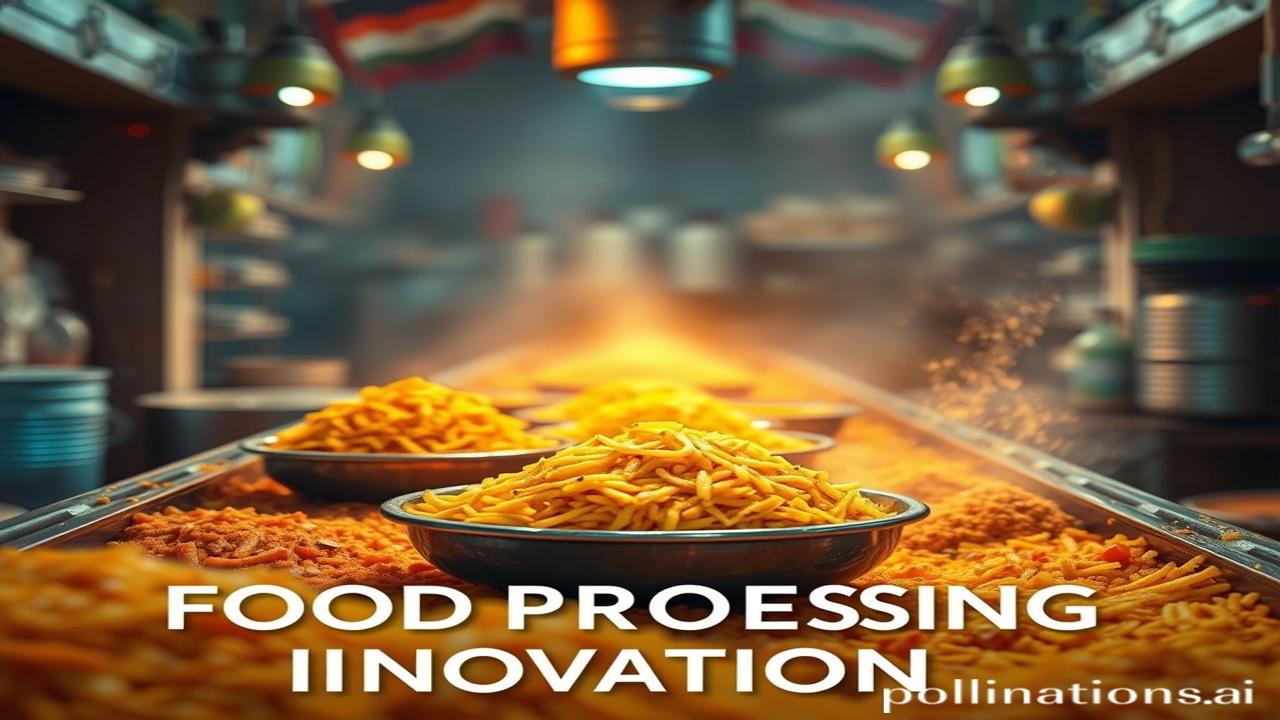Food Processing Innovations: Khaane Ki Kahani, Kal Se Aaj Tak!
Kabhi socha hai, agar Dadima ke haath ki chatni sirf ek mausam tak hi nahi, pure saal milti toh? Agar woh unke ghar ki khushboo duniya bhar mein failti toh? Waqt ki dhool mein dabi, Food Processing Innovations ki kahani aisi hi sapno ko sach karne ki koshish hai. Let’s dive in!
What is Food Processing & Kyun Itna Important Hai?
Food Processing matlab khaane ko tayyar karna, preserve karna, aur ek jagah se dusri jagah le jaane layak banana. Think of it like this: raw materials (gaajar, tamatar, gehun) se lekar ready-to-eat products (pickle, ketchup, atta).
- When & Where: Food processing ki shuruaat toh prehistoric times mein hi ho gayi thi. Dried meats, fermented beverages – ye sab early forms the. Lekin, systematic processing, industrial revolution ke saath hi bada. India mein bhi, ancient techniques jaise pickling, sun-drying centuries se chali aa rahi hain.
- Why Important: Food processing makes food safer, lasts longer, and more convenient. Imagine living without canned food during a natural disaster. Ya fir, Delhi mein baithe Maharashtra ka mango kha paana. It connects us all! Plus, it creates jobs and supports the economy.
Zameeni Sach – Log Aur Jeevan: Processing Ki Dastaan
Imagine a Rajasthani village centuries ago. The women, dressed in vibrant ghagras, are grinding grains with a manual chakki. Sweat drips as they painstakingly create flour for rotis. This was food processing back then – labor intensive, tied to the seasons, and limited by technology.
Then, picture a bustling Delhi market in the Mughal era. Merchants selling preserved fruits from Persia, spices from Kerala, and dried fish from the coast. Preservation techniques like salting, smoking, and drying allowed for long-distance trade.
Fast forward to today: A young entrepreneur in Mumbai using modern technology to create organic snacks. A farmer in Punjab using advanced machinery to harvest and process his crops. From grinding stones to high-tech factories, the journey is incredible!
A farmer’s perspective: “Pehle toh, fasal barbaad ho jaati thi agar market tak sahi time pe nahi pahunchti thi. Ab, processing units aane se, nuksaan kam hota hai aur income bhi badhti hai,” says Kishan Lal, a farmer from Haryana.
Dharohar Aur Pehchan: Kya Aaj Bhi Food Processing Dikhta Hai?
Absolutely! Our festivals, rituals, and culinary traditions are filled with examples of food processing.
- Festivals: Diwali without sweets? Holi without thandai? These delicacies often involve preservation and processing techniques that have been passed down through generations.
- Rituals: Offering dried fruits and nuts during religious ceremonies. The act of preserving food represents prosperity and abundance.
- Culinary Traditions: Each region has its own unique processing methods. South India is famous for its pickles and chutneys, while Gujarat is known for its preserved snacks.
Food processing, in its modern and traditional forms, is integral to Bharatiyata – it’s in our DNA! It’s about nourishment, community, and celebrating the flavors of India.
Majedar Tathya Ya Bhram-Bhanjak: Did You Know This?
Log samajhte hain ki “processed food” hamesha unhealthy hota hai. Lekin, asli sach yeh hai ki many essential foods like milk, flour, and even pre-cut vegetables go through processing to make them safe and convenient. The key is to choose minimally processed options and read labels carefully.
Visual & Sensory Layer: Khaane Ka Ehsaas
The air in the village kitchen smells of wood smoke and spices. The aroma of freshly ground turmeric fills the air. The rough texture of the chakki under the hands. The rhythmic sound of grinding grains, a lullaby of rural life.
Or, imagine walking into a modern food processing plant. The hum of machinery, the bright lights, the sterile environment. A symphony of efficiency and technology.
Antim Vichar Ya Uddharan: A Taste of Wisdom
“Annam Brahma,” a Sanskrit shloka, reminds us that food is divine. Food processing, therefore, should be approached with respect and responsibility. It’s about preserving not just food, but also our cultural heritage and the well-being of future generations.
